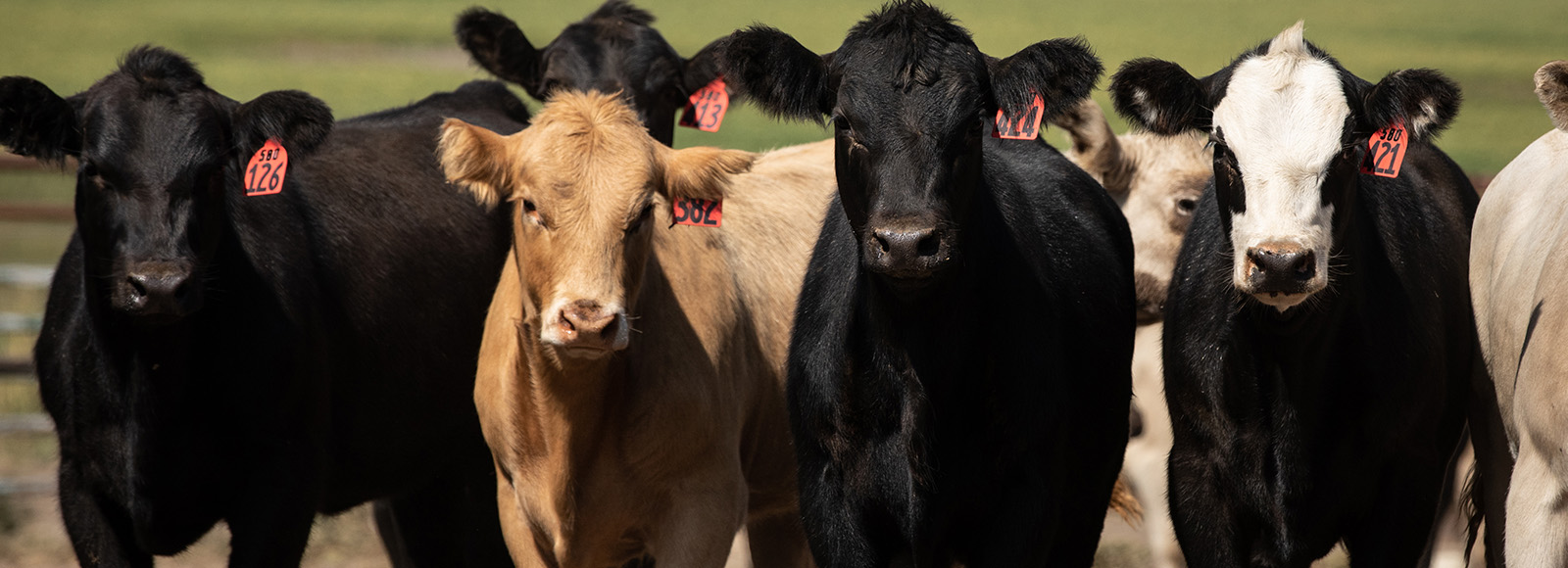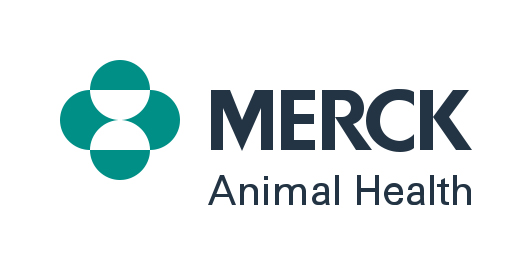
Frequently Asked Questions: Implants




Optimize performance at every stage of production
Learn from these commonly asked questions how to improve growth rates and feed efficiency using implants.
Benefit of implants
If you’re not implanting your calves, you may be leaving money on the table.
Merck Animal Health has partnered with Superior Livestock Auction and Kansas State University to evaluate auction data over the past four years. Based on this data, there has not been a difference in price per pound paid between implanted and non-implanted calves.1
Calves implanted at 2+ months of age will, on average, weigh 23 pounds heavier, be leaner and have a slight increase in frame compared to non-implanted calves.2 Using calf prices during this period translates to $59 per head advantage at the sale block compared to calves that were not implanted.
For more than 50 years, RALGRO® (zeranol implants) has been known for heavier weaning weights that deliver greater revenue in calf crops.
Cattle implants are one of the top tools to improve sustainability by maximizing performance while lessening the environmental footprint.
For example, implanted cattle stand to gain an additional 75-140 pounds over non-implanted cattle, using the same amount of resources.3 With the right implant, cattle can remain productive throughout the entire finishing period.
Cattle implants have been proven safe and highly effective by the FDA for more than 65 years. They help keep high-quality beef affordable for consumers.
Calves on grass
The ergonomic design of the RALGRO® (zeranol implants) RALOGUN®, combined with a small implant size, reduces fatigue while making it easy to administer pellets accurately. Watch these step-by-step instructions to learn the proper implanting technique.
No matter what brand of implant product you buy, each package contains specific administration instructions. Follow package instructions closely each time you implant cattle.
Check out this video for proper RALGRO® implanting.
Implanting suckling calves at 2+ months of age can significantly enhance average daily gain between branding and weaning, resulting in more saleable weight every fall. The research findings are consistent in terms of the performance advantage implants offer and how that equates to more profit. A 23-trial summary of more than 2,358 suckling calves showed an average weaning weight advantage of 23 pounds in cattle administered an implant.2
RALGRO® (zeranol implants) increases rate of gain in suckling beef calves.
Implanting calves during the preconditioning period is one of the most influential practices to increase weight gain during that period. Research shows RALGRO® (zeranol implants) improves average daily gain (ADG) in backgrounding cattle by close to 10%.4-8 Assuming cattle gain 2 pounds per day without an implant during a 60-day preconditioning period, implanting with RALGRO would improve ADG to 2.2 pounds per day. That equates to 12 additional pounds of weight gain over 60 days.
Implants are effective in winter or summer.
Regardless of your herd’s level of gain during the winter months, implants can still provide about a 15% advantage over non-implanted herd members.9
When the right implants are used — matching strength of the implant to weight, growth rate and composition of gain — an ROI can be achieved during each phase of production while maintaining FDA compliance, regardless of the season.
REVALOR®-G (trenbolone acetate and estradiol implants) is dosed for stockers’ maturity levels and matches the hormone level with the production setting to achieve maximum productivity.
When the right cattle implants are given at the right stage, cattle will continue to perform in the following stage. That means calves implanted at turnout and after weaning will have no negative impact on their future performance in the feedlot.
Implants and dewormers are two proven ways to improve weight gain on pasture. Implants help calves more efficiently convert feed into protein and meat. Parasiticides work in the gut, ensuring the animal gets nutrients instead of parasites.
Because they work on two different biological systems, their impact is additive. On average, you might see a 25 lb. advantage from implants and a 25 lb. boost from deworming. These management practices used together can provide producers a 50 lb./head advantage.10
While every animal has a different genetic potential for gain, every animal can respond positively to implanting.
Cattle likely to be higher performers are going to benefit more from being implanted than slower-performing counterparts.
Overall, implants consistently increase an average daily gain by 20%. If an animal grows at 2 pounds per day, with an implant, it will be 2.2 pounds per day. With an animal that grows at 4 pounds per day, it will grow at 4.4 pounds per day if implanted.
Even with excellent genetics, implants consistently increase average daily gain by 20%.11
Feedlot cattle
With an additional 120 pounds live weight or 75 pounds in carcass weight average, REVALOR®-XS (trenbolone acetate and estradiol extended-release implants) delivers huge benefits versus non-implanted steers however or wherever you sell cattle.12,13 REVALOR®-XH (trenbolone acetate and estradiol extended-release implants) can result in an added 83 pounds live weight and 59 pounds in carcass weight over non-implanted heifers.12 No reimplanting necessary.
REVALOR®-XH (trenbolone acetate and estradiol extended-release implants) is formulated specifically for heifers and can yield an additional 83 pounds live weight and 59 pounds in carcass weight average over non-implanted heifers however you sell cattle.12 No reimplanting necessary.
Implementing a one-and-done approach with delayed-release implants — REVALOR®-XS (trenbolone acetate and estradiol extended-release implants) for steers or REVALOR®-XH (trenbolone acetate and estradiol extended-release implants) for heifers — achieves the performance benefit of a reimplanting program without the extra time and labor involved with reimplantation during the feedlot production phase.
These implants are a great option for their ease of use, cattle performance benefits and labor savings.
You avoid the potential downsides of reimplanting, including:
- Added stress and risk of injury to cattle.
- Feed intake loss.
- Additional time, labor and increased risk of injury to you or your staff.
- Risk from weather making it difficult to hit the re-implant window.
Re-implanting can result in a feed intake decrease that takes up to 38 days to return to the same level as before re-implantation levels and some cattle never fully recover.14
Genetic improvement in today’s cattle allows us to feed those cattle to a heavier weight and higher quality grade overall.
While implants have less impact on quality grade today, and implanted cattle can gain at a faster rate, they still require about one extra month to reach the same quality grade as non-implanted cattle.
But it’s also important to consider the value created from the faster rate of gain that comes from implanting cattle.
Cattle Producers:
Merck Animal Health is Here to Help
Always work with your local veterinarian who knows your goals and health challenges in your area.

Explore the complete line of implants from Merck Animal Health

Important Safety Information
RALGRO: Not for use in humans. Keep out of reach of children. No withdrawal period is required when used according to labeling. Do not use in beef calves less than 2 months of age, dairy calves, and veal calves. A withdrawal period has not been established for this product in pre-ruminating calves. Do not use in replacement beef heifers after weaning or in dairy cows or replacement dairy heifers. Use in these cattle may cause drug residues in milk and/or calves born to these cows. Implant pellets subcutaneously in ear only. Any other location is a violation of Federal law. Do not attempt salvage of implanted site for human or animal food. Not approved for repeated implantation (reimplantation) with this or any other cattle ear implant within a single production phase as safety and effectiveness have not been evaluated. For complete safety information, refer to the product label.
REVALOR-G: Not to be used in animals intended for breeding, dairy animals, or veal calves. Implant in ear only. Any other location is in violation of Federal Law. Not approved for repeated implantation (re-implantation) with this or any other cattle ear implant in growing beef steers and heifers on pasture (stocker, feeder, and slaughter). Safety and effectiveness following re-implantation have not been evaluated. Do not salvage implanted site for human or animal food. A withdrawal period has not been established for this product in pre-ruminating calves. Not for use in humans. For complete safety information, refer to the product label.
REVALOR-XS: Not approved for repeated implantation (re-implantation) with this or any other cattle ear implant in growing beef steers fed in confinement for slaughter. Safety and effectiveness following re-implantation have not been evaluated. Do not use in beef calves less than 2 months of age, dairy calves, and veal calves. A withdrawal period has not been established for this product in pre-ruminating calves. Do not use in dairy cows or in animals intended for subsequent breeding. Use in these cattle may cause drug residues in milk and/or in calves born to these cows. Implant pellets subcutaneously in ear only. Any other location is a violation of Federal law. Do not attempt salvage of implanted site for human or animal food. Not for use in humans. Keep out of reach of children. For complete safety information, refer to the product label.
REVALOR-XH: Not approved for repeated implantation (re-implantation) with this or any other cattle ear implant in growing beef heifers fed in confinement for slaughter. Safety and effectiveness following re-implantation have not been evaluated. Do not use in beef calves less than 2 months of age, dairy calves, and veal calves. A withdrawal period has not been established for this product in pre-ruminating calves. Do not use in dairy cows or in animals intended for subsequent breeding. Use in these cattle may cause drug residues in milk and/or in calves born to these cows. Implant pellets subcutaneously in ear only. Any other location is a violation of Federal law. Do not attempt salvage of implanted site for human or animal food. Not for use in humans. Keep out of reach of children. For complete safety information, refer to the product label.
References
1. Superior Livestock Auction Data 2023.
2. Selk, G. Implants for Suckling Steer and Heifer Calves and Potential Replacement Heifers. Proceedings: Impact of Implants on Performance and Carcass Value of Beef Cattle. Oklahoma State University, P-957. 1997. Pg. 40.
3. Pritchard, Robbi H., Bruns, Kelly W., Boggs, Donald L. A Comparison of Lifetime Implant Strategies for Beef Steers. South Dakota Beef Report. 2003. Paper 12.
4. Simms, DD, Goehring, TB, Brandt, RT, Jr, Kuhl, GL, Higgins, JJ, Laudert, SB, Lee, RW. Effect of sequential implanting with zeranol on steer lifetime performance. J. Anim. Sci. 1988. 66:2736–2741.
5. Mader, TL, Clanton, DC, Ward, JK, Pankaski,e DE, Duetscher, GH. Effect of pre- and postweaning zeranol implant on steer calf performance. J. Anim. Sci. 1985. 61:546–551.
6. Thiex, PJ and Embry, LB. Diethylstilbestrol, Melengestrol Acetate and Zeranol During Growing and Finishing of Feedlot Heifers. South Dakota Cattle Feeders Field Day Proceedings and Research Reports. 1972. Paper 13.
7. Embry, LB and Swan, WS. Diethylstilbestrol, Zeranol or Synovex-S Implants for Growing Steers. South Dakota Cattle Feeders Field Day Proceedings and Research Reports. 1974. Paper 4.
8. Embry, LB, Goetz, MS, Luther, RM. Implanting Site for RALGRO Compared to Synovex-S for Growing and Finishing Steers. South Dakota Cattle Feeders Field Day Proceedings and Research Reports. 1982. Paper 10.
9. Ackerman, CJ, Paisley, SI, II, Purvis, HT, Horn, GW, Karges, BR. Effect of a Revalor-G Implant and Source of Supplemental Protein on Weight Gain of Steers Wintered on Dormant Tallgrass Prairie or Old World Bluestem. Research Report. Oklahoma State University Department of Animal and Food Sciences. 1997.
10. Rowland, W, et al. Effects of strategic Deworming with Safeguard, GrainPro supplementation and/or implantation with Revalor-G on grazing performance of stocker steers. 2000.
11. Merck Animal Health. Technical Bulletin #11. Kentucky Comparative Study with Steers: Revalor-G (trenbolone acetate and estradiol), Ralgro (zeranol), Synovex®-S (progesterone/estradiol benzoate) and Control. May 2017.
12. Parr, SL, et al. Dose and release pattern of anabolic implants affects growth of finishing beef steers across days on feed. J. Anim. Sci. 2011;89(3):863-873.
13. Parr, SL, et al. Performance of finishing beef steers in response to anabolic implant and zilpaterol hydrochloride supplementation. J. Anim. Sci. 2011;89(2):560-570.
14. Study Number HR-2S: Evaluation of Implants Containing Reduced-Dose Combinations of Trenbolone Acetate and Estradiol on Performance and Carcass Merit of Finishing Steers.
